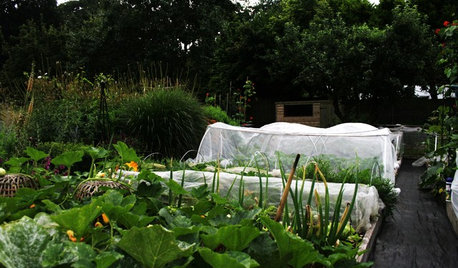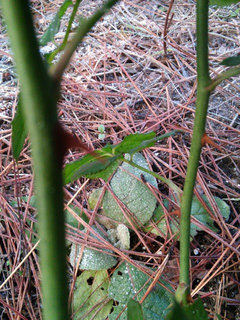"Smith's Parish"
User
8 years ago
Featured Answer
Sort by:Oldest
Comments (46)
User
8 years agoRelated Discussions
Jean Bach Sisley and Smith's Parish: good neighbors?
Comments (10)Thanks Jeri. Malcolm told me once that his roses have always been pretty much in full sun from the get go, so he really doesn't have any experience with the whole partial sun thing. I know from my experimentations that most roses get fungal diseases when we get humid, if the sun isn't there first thing to dry the leaves. That's not to say that there aren't some that wouldn't have a problem, but I'm sure they're in the minority. The original Knockouts seem to take to it O.K. as long as they get all afternoon hot sun. Sandy...See MoreUpdate on my Smith's Parish Red Sport
Comments (4)oh, if I ever got a chance to post on it! LOL! I thought I had the only one - I got it as a gift from Ashdown. I was really really really upset when I thought I lost it. I couldn't find it on HMF, because I was looking for Smith's Parish Red Sport. Later I accidentally found it as Red Smith's Parish while looking for something else. I did a happy dance when I saw that first tiny green growth! The blooms are smaller than they look in my pictures. I'm going to propagate it now just in case....See MoreSmith's Parish / Fortune's Five Color Rose ... in a pot?
Comments (2)Hi, Cori Ann. I almost always grow bands in increasing pots to nurture them and help them establish strong root systems prior to planting them out in beds. A tea rose like SP would be no different. Black nursery pots, especially thicker and more durable injection-molded ones, are good bets. Nursery pots don't lose moisture like clay pots. They also act as wind breakers. As you have discovered, you can disguise them by slipping them into more decorative planters. i usually size up gradually to 2 gallon or so before planting out. But this is Portland, and others from your area can speak to appropriate sizing up and planting out better than I can. In harsher climates, baby roses require more care. Also, rambunctious dogs are a definite consideration. Our 60 lb. collie can't access our beds, but you could grow SP in increasing pots until he looks like he's tough enough to ward off pups. In my area, teas are slow and wouldn't reach that size for a looong time. Our big dog proofing: i bought some devorative metal fencing from Lowe's and caged off-limit places in the garden. It's like a deer fence but for a dog and decorated with pretty swirling metal leaves. i wouldn't grow SP in a pot indefinitely. Too big! Good luck with your ongoing projects. Your garden is looking great! Carol...See MoreRed smith's Parish and 3 different Peggy Martins..
Comments (8)Lots of roses get called "Seven Sisters," but the "real" thing is fairly easy to identify. It will be strictly once-flowring, and the leaves are strange -- rather dull "fuzzy" looking and the leaflets are convex, like the top half of a pillow, rather than lying flat. I know of no other rose that does that. In much of the Southeast, 'Tausendschoen' gets called "Seven Sisters," and it does resemble 'Peggy Martin'. Peggy is more consistently pink, whereas 'Tausendschoen' will have some nearly white flowers. Here are some photos of 'Seven Sisters'....See Morejerijen
8 years agoUser
8 years agoUser
8 years agoUser
8 years agolast modified: 8 years agoSheila z8a Rogue Valley OR
8 years agoUser
8 years agolast modified: 8 years agoUser
8 years agoUser
8 years agoAnne Zone 7a Northern CA
8 years agolast modified: 8 years agoUser
8 years agolast modified: 8 years agoUser
8 years agojerijen
8 years agoroseseek
8 years agojerijen
8 years agoUser
8 years agoUser
8 years agoMike Reisman - Zone 8(b) Central S. Carolina
8 years agoUser thanked Mike Reisman - Zone 8(b) Central S. CarolinaUser
8 years agoMike Reisman - Zone 8(b) Central S. Carolina
8 years agoUser
8 years agoUser
8 years agoAlana8aSC
8 years agoUser
8 years agoroseseek
8 years agoAnne Zone 7a Northern CA
8 years agoUser
8 years agoUser
7 years agoUser
7 years agoUser
7 years ago
Related Stories

EDIBLE GARDENSFood and Community Thrive in a U.K. Allotment Garden
Get a peek at a rented garden plot in England where edibles and flowers mix and local residents can mingle
Full Story
WINDOW TREATMENTSRoller Shades Raise the Curtain on Style
The humble window treatment is stealing the scene with fresh patterns, color and pizzazz
Full Story
CITY GUIDESHouzz Travel Guide: Atlanta for Design Lovers
You'll find world-class museums, restaurants, hotels and shops in Georgia's woodsy, welcoming and charming capital
Full Story
Fruit Displays Sweeten Summer Interiors
Eating the rainbow takes on a new meaning in these seasonally inspired fresh fruit accents
Full Story
DECORATING GUIDESGet the Look: 'Scandal' Style for a Sensationally Chic Home
Model a room after the compelling TV show for all the visual drama with none of the conflicts
Full Story









malcolm_manners